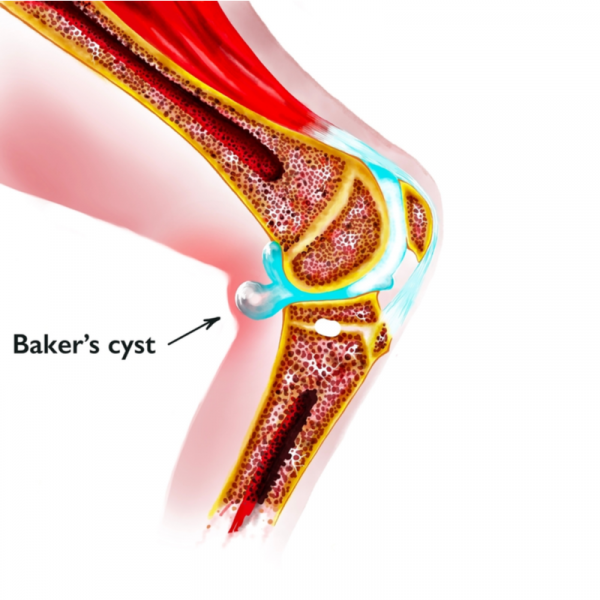
What is a Baker's cyst?
A Baker's cyst develops in the back of the knee. It is a bulge in the joint capsule of the knee joint. A Baker's cyst can develop as a result of meniscus damage or osteoarthritis of the knee joint, where the body produces more joint fluid. The Baker's cyst is noticeable by a palpable swelling and can cause a feeling of tightness or even pain in the area of the back of the knee. Middle-aged and older people in particular are more likely than average to develop a Baker's cyst.
How does a Baker's cyst develop?
The increased production of fluid in the knee joint leads to increased pressure in the knee joint capsule. In the course of this, the joint capsule may even bulge out in the hollow of the knee. This phenomenon is called a Baker's cyst.
What symptoms does a Baker's cyst cause?
A Baker's cyst causes different symptoms depending on its size. While a relatively small cyst causes little to no pain, larger cysts can be palpable and/or visible from the outside. They can often be accompanied by pain in the back of the knee or calf and a feeling of tightness. Furthermore, swelling or pain in the back of the knee can occur, which should always be clarified by a doctor in any case. This does not necessarily have to be a Baker's cyst. It can also be a venous thrombosis or a malignant tumour.
How is a Baker's cyst diagnosed?
A Baker's cyst can usually already be diagnosed by the typical undulation in the area of the back of the knee and the associated complaints. For a confirmed diagnosis, an ultrasound examination can also be performed, which also shows the size and exact location of the cyst. If the diagnosis of a Baker's cyst is confirmed, the doctor will usually also examine the knee joint using an X-ray or magnetic resonance imaging. This is because the knee joint is mainly damaged by the cyst.
How is a Baker cyst treated?
The treatment of a Baker cyst varies depending on the size and symptoms. To relieve the pressure on large cysts, they are punctured. Smaller cysts are treated more classically with anti-inflammatory medication and painkillers. If the cyst recurs after a certain period of time, the doctor will also consider surgical removal.
If the Baker's cyst is caused by meniscus damage or arthrosis of the knee joint, these conditions must also be treated accordingly.
| Pathogen | Source | Members - Area |
|---|---|---|
| Baker cyst | EDTFL | As a NLS member you have direct access to these frequency lists |
